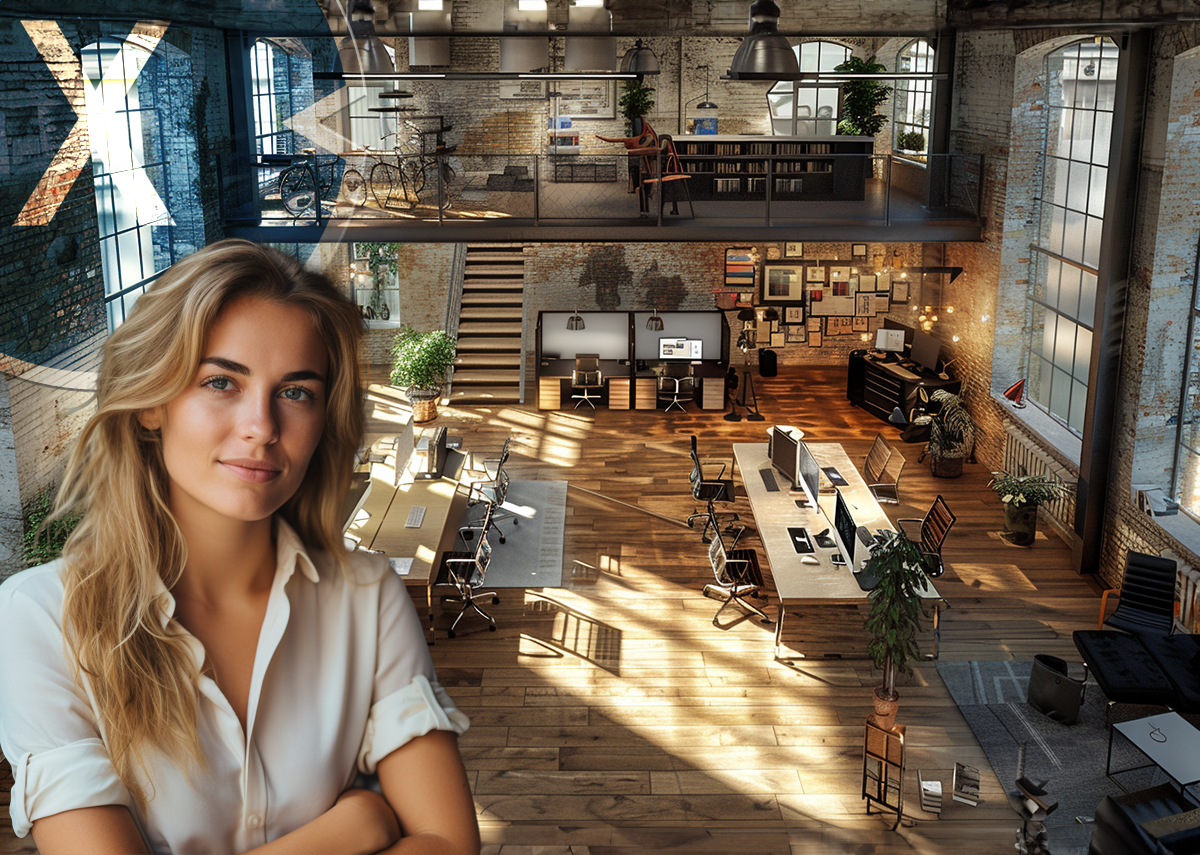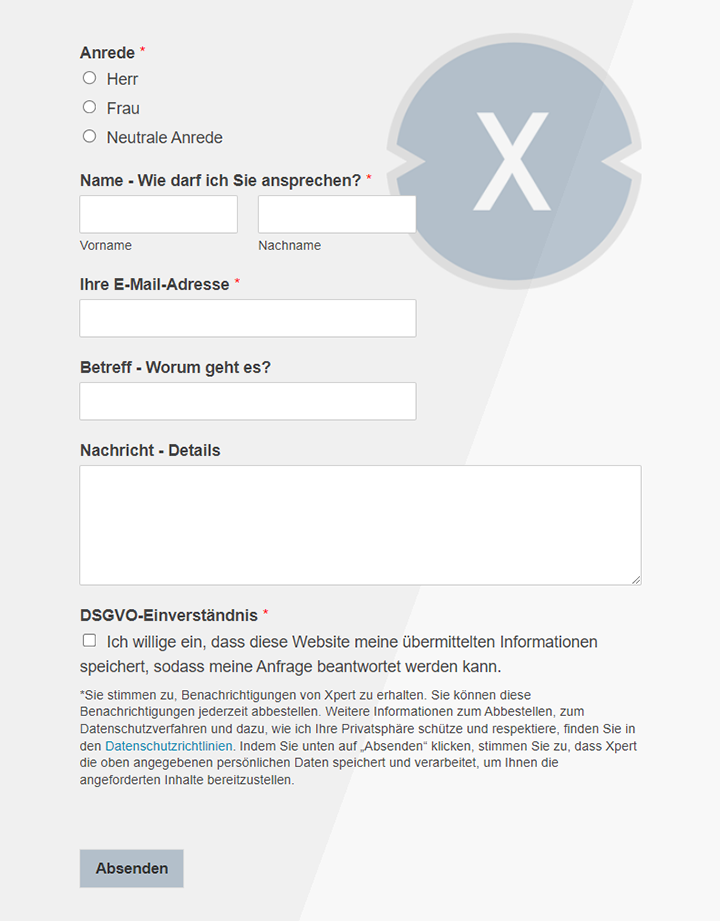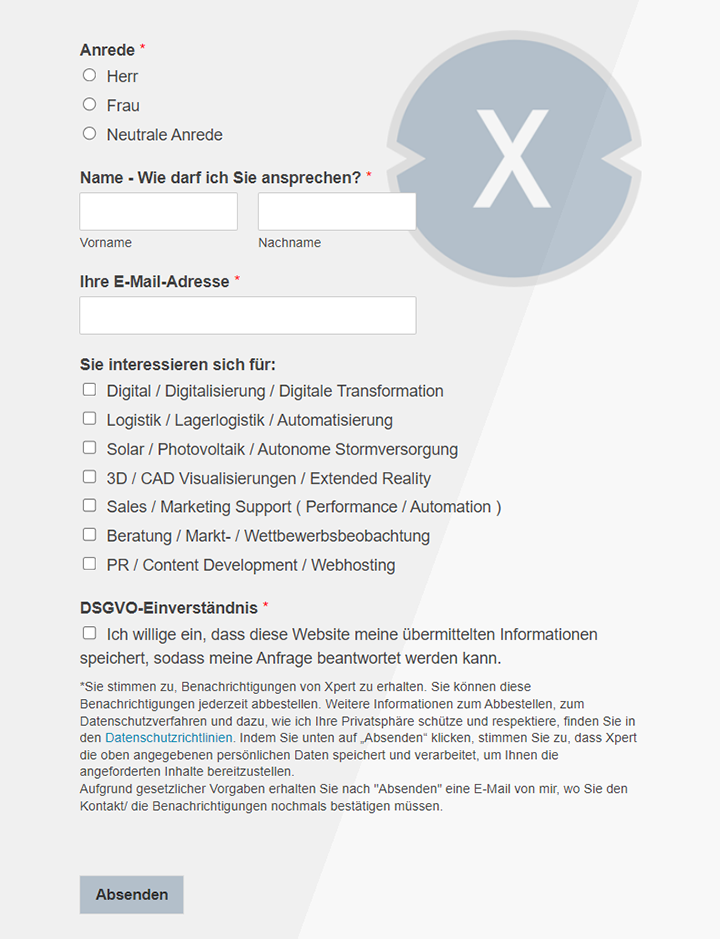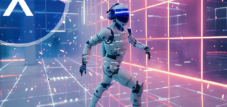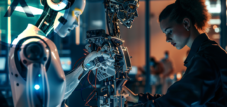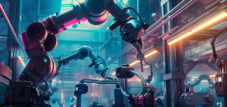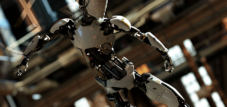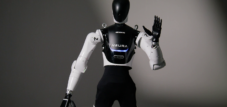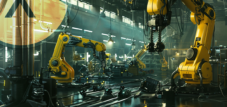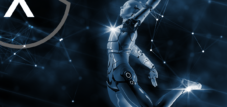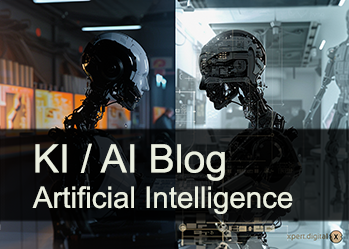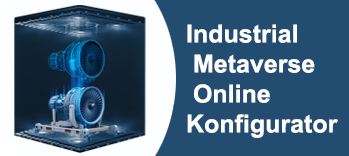NVIDIA's Cosmos platform for physical robot AI: ChatGPT breakthrough for general robotics is imminent
Xpert pre-release
Language selection 📢
Published on: January 22, 2025 / Update from: January 22, 2025 - Author: Konrad Wolfenstein
Jensen Huang's bold prediction: The defining moment for robotics is approaching - analysis/summary
Pioneering change: Why the 'Chatgpt-Moment' will transform the robotics
Jensen Huang, the CEO of Nvidia, presented a groundbreaking vision for the future of robotics during his keynote on CES 2025 in Las Vegas. He announced that "the chattm moment for general robotics was imminent". This statement underlines Huang's conviction that the robotics are faced with a breakthrough as the artificial intelligence experienced with chatt.
Nvidia's innovations in robotics
To realize this vision, Nvidia introduced several important innovations:
- Cosmos platform: This new platform is intended to revolutionize the development of physical AI for robots and autonomous vehicles. Cosmos uses World Foundation Models (WFMS) to create realistic simulations and accelerate the development of AI systems.
- Project Digits: A compact AI supercomputer for developers who brings Nvidias Grace Blackwell technology to the desktop.
- Partnerships: NVIDIA announced that companies such as Toyota, Hyundai and Aurora announced in order to promote the development of autonomous vehicles.
Suitable for:
Effects on different industries
Huang sees far -reaching applications for these technologies:
- Autonomous vehicles: “Each car company in the world will have two factories, one for the construction of cars and one to update their KIs”.
- Industrial robotics: Nvidia works with companies such as Kion and Accenture to optimize AI-controlled robots and digital twins in supply chains.
- Humanoid robots: Huang predicts that "human robots will surprise everyone with their incredible performance".
Suitable for:
Future prospects
Huang emphasized that these developments will lead to significant breakdowns in robotics in the next few years. He sees the potential for “one billion humanoid robots, 10 million automated factories and 1.5 billion autonomous cars and trucks” in the future.
With these announcements, Nvidia positions itself at the head of the KI and Robotic Revolution and promises to change the way we live and work.
Physical AI could only be ready in the 2030s
Although Nvidia and other companies are already working intensively on physical AI, much indicates that the widespread use and maturity of this technology is actually only to be expected in the 2030s:
Current developments
Nvidia presented its vision for physical AI at CES 2025, including the Cosmos platform for the development of robots and autonomous vehicles. CEO Jensen Huang sees enormous potential and predicts that "the chattm moment for general robotics is imminent".
Challenges on the way to maturity
Despite these optimistic forecasts, there are still a few hurdles to overcome:
- Complexity of the real world: Physical AI must be able to deal with the unpredictability and diversity of the physical environment, which is significantly more demanding than purely digital applications.
- Technological maturity: The integration of advanced AI into robust, reliable robot systems still requires considerable progress.
- Ethical and regulatory questions: The use of autonomous systems in the real world raises complex ethical and legal questions that need to be clarified.
- Infrastructure and energy requirement: The implementation of physical AI systems on a large scale requires considerable investments in infrastructure and a solution for increasing energy requirements.
Outlook for the 2030s
Experts and studies indicate that the 2030s could actually be the more realistic time frame for the broad application of physical AI:
- According to a McKinsey study, up to 30% of current working hours could be replaced by AI and automation by 2030, which indicates increasing integration of physical AI.
- Forecasts provide for progressive robot systems in areas such as healthcare, manufacturing and logistics to be widespread by 2030.
- The development of humanoid robots, which could serve as a variety of physical AI platforms, will probably make significant progress in the 2030s.
While the basics of physical AI are already laid, the full maturity and broad application of this technology will probably not be reached until the 2030s. This gives companies, society and regulatory authorities time to prepare for the transformative effects of this technology.
Our recommendation: 🌍 Limitless reach 🔗 Networked 🌐 Multilingual 💪 Strong sales: 💡 Authentic with strategy 🚀 Innovation meets 🧠 Intuition
At a time when a company's digital presence determines its success, the challenge is how to make this presence authentic, individual and far-reaching. Xpert.Digital offers an innovative solution that positions itself as an intersection between an industry hub, a blog and a brand ambassador. It combines the advantages of communication and sales channels in a single platform and enables publication in 18 different languages. The cooperation with partner portals and the possibility of publishing articles on Google News and a press distribution list with around 8,000 journalists and readers maximize the reach and visibility of the content. This represents an essential factor in external sales & marketing (SMarketing).
More about it here:
Nvidia and the departure into the era of physical AI: A look into the future of robotics - background analysis
“Robotics 2.0: Nvidia CEO outlines a new era in technology-the next big step
The annual Consumer Electronics Show (CES) in Las Vegas is traditionally a shop window for the latest technological innovations. The CES 2025 was no exception, especially through the presentation of Nvidia, led by CEO Jensen Huang. His vision goes far beyond pure consumer electronics and outlines a future in which artificial intelligence (AI) fundamentally transforms the world of robotics. Huang's core message that the "chatt moment" for general robotics is imminent, indicates an upcoming revolution that has the potential to change the way we live, work and interact. This announcement, which underlines the similarity to the groundbreaking progress of the generative AI, illustrates that the robotics are facing a similar exponential leap forward as the AI experienced it through models such as chatt.
Nvidia's approach to realize this vision is multi -layered and comprehensive. It includes both innovative hardware and software solutions and is strengthened by strategic partnerships with leading industrial companies.
Suitable for:
The Cosmos platform: a quantum leap for the physical AI
At the center of Nvidia's robotics vision is the Cosmos platform, a pioneering system that aims to revolutionize the development of physical AI for robots and autonomous vehicles. Cosmos goes beyond traditional software development and uses World Foundation Models (WFMS). These WFMs enable the creation of highly realistic simulations, which enable robots to learn and train in virtual environments. This allows the AI systems of the robots to be prepared for a variety of scenarios without having to carry out risky or costly experiments in the real world. These simulations are so realistic that they precisely reproduce the unpredictable and complex conditions of the real world. This enables robots to develop a deeper understanding of their surroundings and thus act more effectively and safely. The ability of the Cosmos platform to create detailed and multi-layered simulated worlds is a crucial step to enable the next generation of intelligent robots.
Suitable for:
- Industrial Metaverse Digital Twins: Siemens Xcelerator and NVIDIA are building the digital twin in the Omniverse – enterprise solutions
- Industrial metaverse and digital twin in production: Mercedes-Benz builds virtual factories with the NVIDIA Omniverse
Project Digits: A AI supercomputer for developers
Another key element in Nvidia's strategy is Project Digits, a compact AI supercomputer that brings the immense computing power of Nvidias Grace Blackwell technology to the desk of developers. In contrast to the large and expensive supercomputers of the past, Digits is small, accessible and enables developers to train and test AI models without being bound to extensive arithmetic resources. By providing high-performance computing for a wider range of researchers and developers, Project Digits significantly accelerates the innovation cycle in robotics. This democratization of AI access is crucial to exploit the full potential of physical AI and to promote the development of new robot solutions.
Strategic partnerships: The driving force of the innovation
In addition to these technological advances, Nvidia has also closed strategic partnerships with leading companies in various industries. These collaborations are intended to accelerate the development of autonomous vehicles and the integration of AI-based robotic solutions into industrial production. Partnerships with car manufacturers such as Toyota and Hyundai as well as companies that specialize in autonomous driving systems, such as Aurora, show the importance of cooperation in the introduction of new technologies. These companies work with NVIDIA to equip their own vehicles and robot systems with the latest AI progress, which enables faster and more efficient integration into everyday life.
Areas of application: A look into the future
The potential applications of the technologies developed by Nvidia are diverse and extensive. Huang outlines a future in which AI-based robots will be present in almost every area of life:
Autonomous vehicles: Huang predicts a revolution in the automotive industry. He sees every automobile company as the future operator of two factories: one that builds physical cars, and one that continuously updates the AI systems. This illustrates the growing importance of software and AI for the automotive industry. In this future, cars are not only means of transport, but intelligent, constantly developing systems that are able to optimize their own performance and security. The partnerships with Toyota, Hyundai and Aurora underline this vision and indicate that self -driving cars will become increasingly reality in the coming years.
Industrial robotics: In industrial robotics, Nvidia works with companies such as Kion and Accenture. Their goal is to optimize supply chains by using AI-controlled robots and digital twins. This cooperation aims to increase efficiency, reduce costs and to improve the production processes in industry. Digital twins, virtual replicas of physical systems, enable companies to simulate and optimize their processes before implementing them in the real world. This minimizes risks and maximizes the effectiveness of the robotic solutions.
Humanoid robots: The vision of humanoid robots that are able to perform a wide range of tasks is getting closer. Huang predicts that "humanoid robots will surprise everyone with their incredible performance". These versatile robots are able to carry out complex tasks and can be used for a variety of applications, from working in factories to the support of people in everyday life. They could also be used in dangerous environments in which human intervention would be risky. The development of such robots requires considerable progress in AI, robotics and material science, and Nvidia's technologies should enable the breakthrough.
The future forecast: a world full of robots
Huang's vision extends far beyond the current developments. He predicts a future in which robotics will be omnipresent. He sees a world with a billion humanoid robots, 10 million automated factories and 1.5 billion autonomous cars and trucks. This vision may seem futuristic, but it illustrates the immense potential of physical AI. Developments in recent years have shown that the technology is progressing quickly and Huang's predictions could become a reality in the coming decades.
The role of Nvidia in this revolution
With these announcements, Nvidia positions itself at the head of the AI and Robotic Revolution. The company has developed from a graphics chip manufacturer into a leading company in the development of AI technologies. The vision and strategic approach of Nvidia make it clear that the development of physical AI is the future of robotics and that the company will be significantly involved in this development.
The way to reality: challenges and opportunities
Despite the optimistic visions drawn by Nvidia, it is important to understand that the complete implementation of physical AI is associated with some challenges, especially with regard to the time frame. While Nvidia has already made significant progress, the general maturity and broad application of this technology is probably only realistic in the 2030s.
Challenges on the way to maturity of the physical AI
Complexity of the real world: The physical world is chaotic and unpredictable. Robots must be able to move in complex environments, to react to unexpected situations and to deal with varying conditions. Compared to purely digital applications in which the parameters are clearly defined, interaction with the real world is a significant challenge for the physical AI. There is still a lot of research and development to give robots the ability to provide safe and efficient to move in the real world.
Technological maturity: The integration of advanced AI into robust and reliable robot systems is a complex process that requires considerable progress in different technological areas. This not only includes the AI algorithms themselves, but also the hardware, sensors and actuators of the robots. The development of systems that offer permanent and reliable performance in demanding environments is an important step. The reliability and robustness of AI-based robot systems is essential for broad use.
Ethical and regulatory questions: The introduction of autonomous systems in the real world raises a number of complex ethical and legal questions. Who is responsible if a robot makes a mistake? How do we protect people's privacy and security while we use the advantages of robotics at the same time? The development of clear ethical guidelines and regulatory framework is of crucial importance in order to gain the public's trust in these technologies and to use them responsibly. The discussion of these questions will be intensified in the coming years.
Infrastructure and energy requirement: The broad implementation of physical AI systems requires extensive investments in the infrastructure. These include high-speed communication networks, advanced data centers and the necessary power supply. The AI systems need a lot of energy, which leads to an increased need. The energy supply and the efficient use of resources is an important challenge that must be taken into account in the large introduction of physical AI.
Outlook for the 2030s: The future begins now
Despite these challenges, there is a growing agreement that the 2030s will be a decisive decade for the development and application of physical AI. Studies and forecasts indicate a change that will fundamentally change our society and economy:
Automation and labor market: A study by McKinsey predicts that until 2030 up to 30% of the current working hours could be replaced by AI and automation. This number illustrates the great potential of the physical AI to change the world of work. It is expected that many routine tasks, which are carried out by humans today, are increasingly being taken over by robots. This will present the labor market with challenges, but will also create new opportunities. The retraining and further training of workers will be an important aspect in the introduction of AI-based technologies.
Advanced robot systems: forecasts assume that advanced robot systems will be widespread in a variety of areas by 2030, including healthcare, production and logistics. These systems will not only automate tasks, but also offer innovative solutions for existing problems. For example, robots can assist in operations, look after older people or transport them more efficiently in logistics. The spread of such systems will change our economy and our lives sustainably.
Humanoid robots: The development of humanoid robots, which serve as a variety of physical AI platforms, will probably make decisive progress in the 2030s. These robots could be able to take on a wide range of tasks and to work with people in many different situations. The ability of these robots to learn and carry out complex tasks will open up new opportunities for automation and human-robot interaction.
A transformative technology with great challenges
The development of physical AI is undoubtedly one of the most important technological developments of our time. While the basics are already laid and companies such as Nvidia are driving development, the full ripeness and broad application of this technology will probably not be achieved until the 2030s. This gives us everyone, the economy, society and the regulatory authorities, time to prepare for the transformative effects. It is important to take into account the ethical, social and economic effects of this technology to ensure that it is used for the benefit of humanity. The development of physical AI promises a new era of innovation and progress, which will change our lives sustainably. The way there is still paved with challenges, but the chances are immense.
We are there for you - advice - planning - implementation - project management
☑️ SME support in strategy, consulting, planning and implementation
☑️ Creation or realignment of the digital strategy and digitalization
☑️ Expansion and optimization of international sales processes
☑️ Global & Digital B2B trading platforms
☑️ Pioneer Business Development
I would be happy to serve as your personal advisor.
You can contact me by filling out the contact form below or simply call me on +49 89 89 674 804 (Munich) .
I'm looking forward to our joint project.
Xpert.Digital - Konrad Wolfenstein
Xpert.Digital is a hub for industry with a focus on digitalization, mechanical engineering, logistics/intralogistics and photovoltaics.
With our 360° business development solution, we support well-known companies from new business to after sales.
Market intelligence, smarketing, marketing automation, content development, PR, mail campaigns, personalized social media and lead nurturing are part of our digital tools.
You can find out more at: www.xpert.digital - www.xpert.solar - www.xpert.plus




